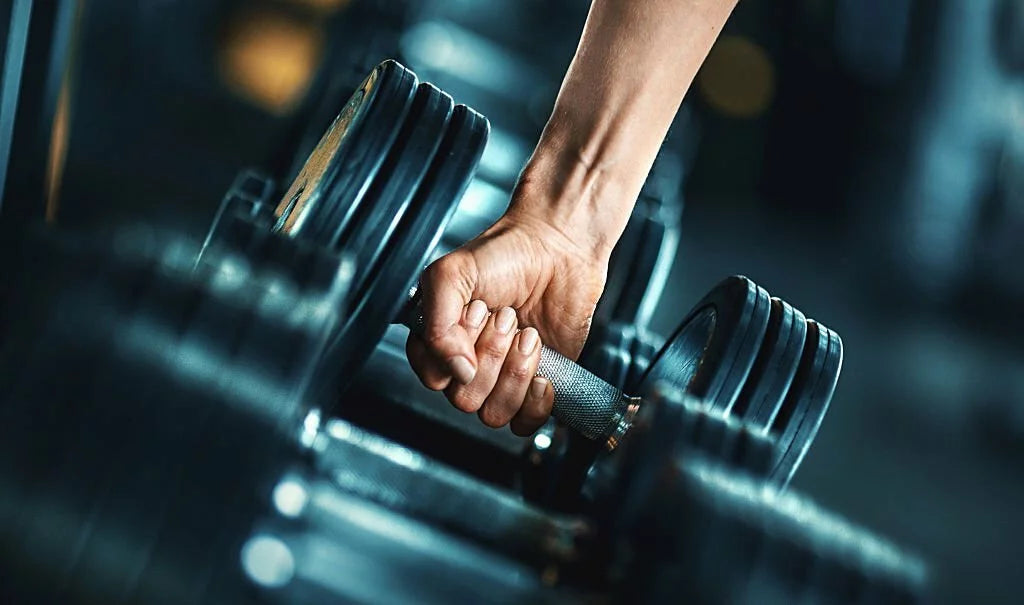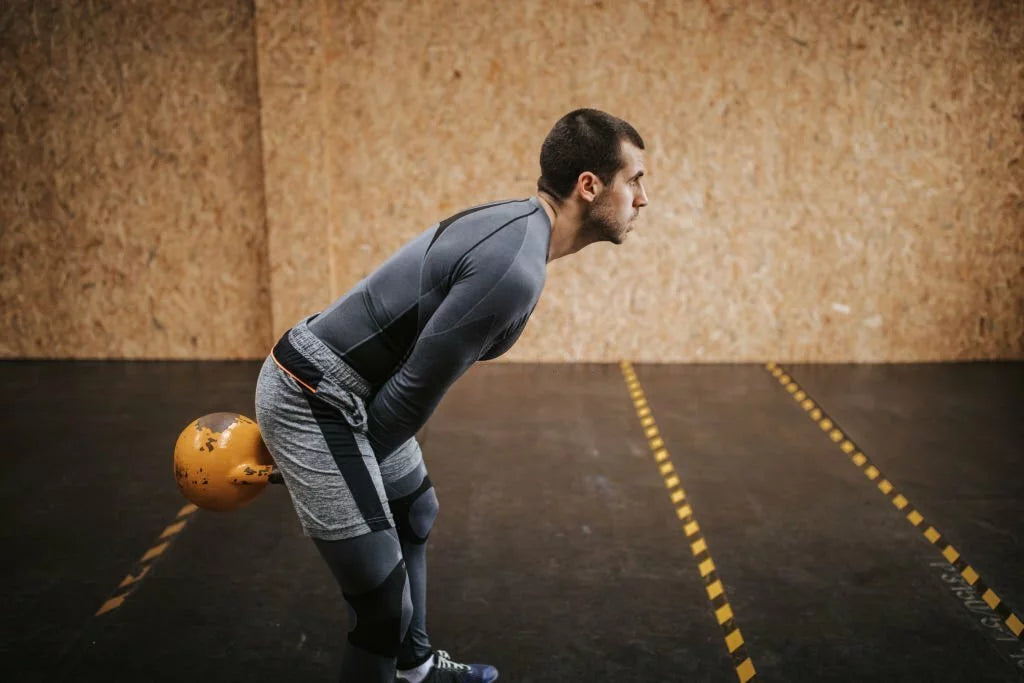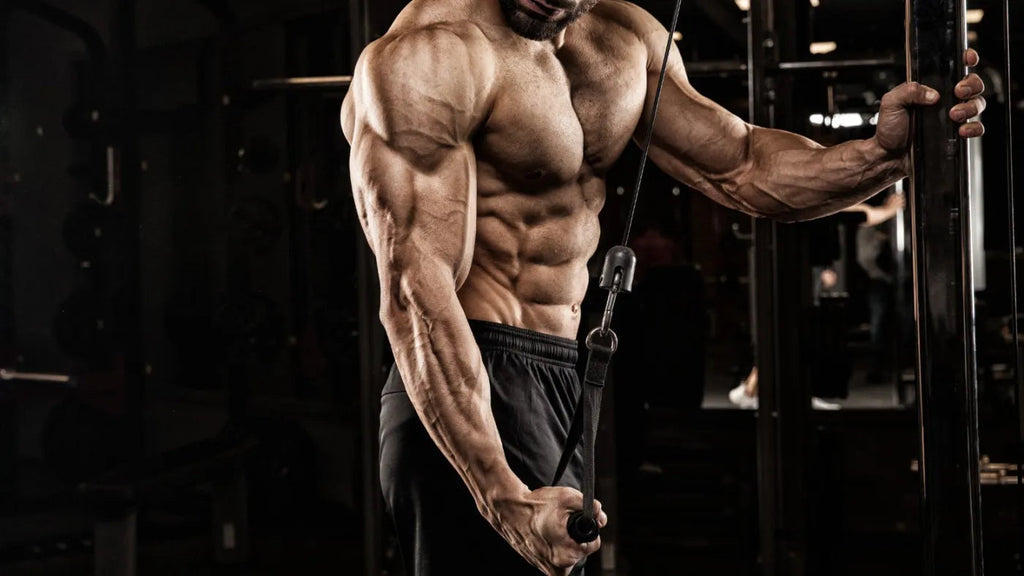11 Best Forearm Workouts With Dumbbells

The forearms, often overshadowed by more showy body parts, are the unsung champions of functional strength. Yet, many gym goers neglect dedicated forearm training, assuming that these muscles get a sufficient workout through compound exercises.
This assumption, though, is unjustified?
You simply cannot neglect your forearms and still expect to reach peak strength and functionality. This article addresses the issue by laying out ten great forearm exercises to build powerful, muscled, strong forearms.
Understanding Forearms and Forearm Muscles
| Wrist Flexors | Located on the side of the palm of the hand, these muscles control wrist flexion. They allow you to bend your wrist downward. |
| Wrist Extensors | Found on the side of the back of the hand, extensors facilitate wrist extension, allowing the hand to move upwards. |
| Rotators | These muscles contribute to both the external and internal rotation of the hand. They play a key role in wrist mobility, enabling movements in different directions. |
| Extrinsic Muscles (controlling finger movement) |
Originating in the forearm, these muscles control finger movement, allowing you to grip, hold, and manipulate objects. |
One standout muscle in the forearm in terms of development is the Brachioradialis, located on the lateral side of the forearm. It’s often associated with the biceps due to its position, but it is properly a forearm muscle. It assists in both flexing the elbow and supinating the forearm (turning the palm upward).
Forearm Function & Muscles Worked
The forearms are central to grip strength. This is a fundamental aspect of functional strength in our daily lives. Whether we're shaking hands, carrying groceries, or typing on a keyboard, the forearms are silently at work, ensuring our hands maintain a firm and controlled grip.
It's important to recognize that the anatomy of the forearm is intricate, with layers of muscles crossing in various directions. While the wrist can perform multiple motions, such as flexion, extension, circular, and side-to-side movements, it primarily bends forward and backward. This is where the primary musculature of the forearm comes into play, facilitating wrist flexion and extension.
Standard wrist curls and reverse wrist curls are commonly used to target the forearm muscles. However, these exercises can pose mechanical challenges, especially when using a barbell. To address these challenges, dumbbells can provide more comfort and flexibility in wrist movement.
While working on forearm flexors is undoubtedly worthwhile for both functionality and aesthetics, it's important to note that devoting significant effort to forearm extensors may yield limited benefits for physique development. Instead, exercises like hammer curls can effectively develop the Brachioradialis, a prominent muscle on the "knuckle" side of the forearm.
Why Train Forearms with Dumbbells
Training with dumbbells is ideal for the forearms. First, it allows you to work each of your forearms separately. This ensures even development. Nearly all people have some degree of imbalance of muscular size and strength from one side to the other.
When you use a barbell, it is easy for the stronger side to take over. This causes the bar to come up unevenly and can lead to unequal muscle and strength development. However, dumbbells make each of the forearms carry its own load.
When you train your forearms with a barbell, your hands are fixed in place. That means that you cannot pronate or supinate them. This prevents you from exercising the forearms through the full range of movement. Forearm workouts with dumbbells overcome this problem as it allows the wrists to turn in every direction.
Training with dumbbells is an example of unilateral training. This involves each limb working independently. It should be noted that both limbs could be working simultaneously, as when you are doing wrist curls with both hands together. However, each muscle is working independently.
Dumbbells allow for a greater range of variable loading than barbells. Most gyms will offer a range of dumbbell weights going up in small increments, such as five pounds. This allows you to make more gradual weight jumps than the twenty-pound jumps that you often see with barbells.
11 Forearm Exercises with Dumbbells
Hammer Curls
The dumbbell hammer curl is the best exercise to work the brachioradialis, which is the largest muscle of the forearms. Because the exercise also works the biceps, you can use more weight than in most forearm exercises.
How to do hammer curls:
- Stand with your feet shoulder-width apart and a pair of dumbbells held at arm’s length with a neutral grip, as if you were holding a hammer.
- Lift your right arm to bring the dumbbell up to shoulder level. Keep your back neutral and avoid any back swing.
- Lower under control and repeat with the left side.
- Alternate sides to complete your rep count.
Zottman Curls
- Stand with your feet shoulder-width apart and a pair of dumbbells held at arm’s length with a neutral grip, as if you were holding a hammer.
- Lift both dumbbells together up to shoulder level, then supinate the dumbbells to twist your thumbs away from your body.
- Now pronate the wrists to twist the thumbs back towards the body.
- Lower slowly under control and repeat.
Dumbbell Wrist Rotations
Stand with a pair of dumbbells held at arm’s length with a neutral grip.
Squeeze the dumbbell handles tightly, then rotate the dumbbells inward to a palms forward position.
Now twist the wrists the other way to a knuckles forward position. That is one rep.
Hex Dumbbell Hold
The Hex Dumbbell Hold is another very good grip development and strength training exercise. It is best to do the exercise with hexagonal dumbbells as this allows you to get a better grip. You can, though, use round dumbbells if that's all you've got.
- Place a pair of dumbbells on the floor at your feet on their ends. Bend down to grab each dumbbell by its end. Your palms should cover the end of the weight with your fingertips over the edges.
- Stand upright with your arms at your sides.
- Hold this position for the required length of time.
Wrist Curl
- Begin by sitting at the edge of a weight bench, holding a pair of dumbbells with your palms facing upward. Position your pinkies roughly eight inches apart. Rest your forearms on your knees so that your wrists dangle over the knee's edge while keeping the forearms parallel throughout the movement.
- Gradually extend your wrists downward, allowing the dumbbells to roll down your fingers.
- From the lowest point, flex your forearms to bring the dumbbells back to the start position.
Reverse Wrist Curl
- Take a seat at the edge of a bench, gripping a pair of dumbbells with your palms facing downward. Maintain a distance of about eight inches between your hands. Place your forearms on your knees, ensuring your wrists hang over the knees' edge while keeping the forearms parallel throughout the exercise.
- Gently extend your wrists downward, enabling the dumbbells to roll down your fingers.
- From the lowest position, flex your forearms to return the dumbbells to the starting point.
Single Arm Wrist Curls
- Sit on the edge of a bench with a dumbbell held in a palms-up grip in your right hand. Rest your forearm on your right knee with your wrist hanging over the edge of your knees. Place your left hand on its corresponding knee.
- Extend your wrist down all the way as you allow the dumbbells to roll down your fingers.
- From the bottom position, flex your forearm to bring the dumbbells back to the start position.
Wrist Adduction
- Stand with your arms hanging by your sides, gripping a pair of lightweight dumbbells.
- Without bending your elbows, perform adduction by raising your thumbs upward.
- Lower your hands and repeat the motion.
Wrist Abduction
- Sit on the floor with your forearms resting on a bench, your palms facing down, and your wrists hanging over the bench's edge. Hold a pair of lightweight dumbbells in your hands, positioning your thumbs approximately eight inches apart.
- Rotate your wrists to raise your thumbs upward and away from your body.
- Lower your wrists and repeat the action.
Farmer's Walk
The Farmer's Walk is an excellent exercise for enhancing forearm grip strength and endurance. The longer you can sustain the dumbbell hold, the stronger your grip becomes.
- Begin by taking a heavy pair of dumbbells from the rack, holding them at arm's length by your sides.
- Walk around your workout area, taking approximately 20 paces away from the dumbbell rack and then returning. This activity should last anywhere from 3 to 60 seconds. Keep your arms close to your sides throughout the exercise.
- Carefully return the dumbbells to the rack.
Plate Pinch
- Grab two weight plates of the same size. Start with lighter plates, such as 2.5 or 5 pounds, if you haven’t done this exercise before.
- Stand with your feet shoulder-width apart and a plate in each hand with your palms facing each other in a pinch grip. Your fingertips should be on one side of the plates, and your thumbs should be on the other side. You will effectively be pinching the plates together.
- Hold the weight plates for a designated amount of time. Beginners can start with shorter durations (e.g., 15-30 seconds), and as you progress, you can increase the time.
- If you're looking to challenge yourself further, you can incorporate walking into plate pinches. Take slow, controlled steps while maintaining your grip on the plates. This adds an extra layer of difficulty to the plate pinch press.
Personal Trainer DB Forearm Workout Tips
Focus on Form: Maintain strict form throughout your forearm exercises. Ensure your wrists are in the correct position and move through the full range of motion.
Gradual Progression: Start with manageable weights and gradually increase resistance over time. Avoid using excessive weight that compromises your form.
Mind-Muscle Connection: Concentrate on feeling the forearm muscles working during each repetition. Visualize the muscles contracting for better results.
Balanced Training: Pay attention to both flexor and extensor muscles for balanced development. Neglecting one side can lead to muscle imbalances.
Controlled Movements: Emphasize slow and controlled movements during both the concentric (lifting) and eccentric (lowering) phases of each exercise.
Consistency: Consistency is key to seeing progress. Stick to your forearm workout routine, and results will follow.
Rest and Recovery: Allow adequate rest between forearm workouts to ensure your muscles have time to recover and grow.
Nutrition and Hydration: Proper nutrition and hydration play a significant role in muscle development. Ensure you're getting enough protein and staying hydrated to support your forearm gains.
Listen to Your Body: If you experience pain or discomfort during an exercise, stop immediately. It's essential to prioritize safety and avoid overtraining.
Incorporating Forearm Workouts into Overall Fitness Routine
You should perform targeted forearm workouts twice per week, giving yourself at least 48 hours between sessions. Do not train your forearms before working major muscle groups that rely on them, such as your back. In fact, I recommend training them at the last body part of a workout so you don’t compromise any other exercises that rely on forearm strength.
You should perform no more than eleven sets for your forearms. This is a muscle group that responds well to a variety of reps, so pyramid down from a high of 20 to a low of 8, increasing the weight on each set.
Here are a couple of sample workouts you can alternate between based on the exercises described above:
Forearm Dumbbell Workout #1
- Hammer Curl - 3 x 8-12 reps
- Wrist Curls - 2 x 12-15 reps
- Single Arm Reverse Wrist Curls - 2 x 12-15 reps
- Wrist Abduction - 2 x 12-15 reps
- Farmer’s Walk - 2 x 60-second walk
Forearm Dumbbell Workout #2
- Zottman Curl - 3 x 8-12 reps
- Hammer Curl - 2 x 8-12 reps
- Reverse Wrist Curls - 2 x 12-15 reps
- Wrist Adduction - 2 x 12-15 reps
- Farmers Walk - 2 x 60-second walk
Conclusion
Now that you’re armed with the eleven best forearm workouts with dumbbells that exist, there’s no excuse not to give your lower arms the respect they deserve. Dumbbells offer advantages like independent forearm work, full range of motion, and variable loading, making them an ideal choice for balanced development.
Incorporate these forearm-focused exercises into your program by alternating the two workouts given. Work at it consistently, incorporating the progression tips provided, and you’ll soon see results. Remember, the forearms are the unsung heroes of strength; it's time to give them the recognition they deserve and unlock your true forearm power.


